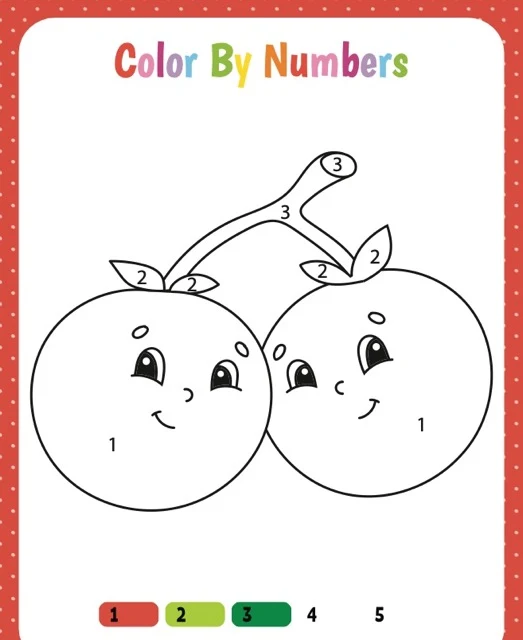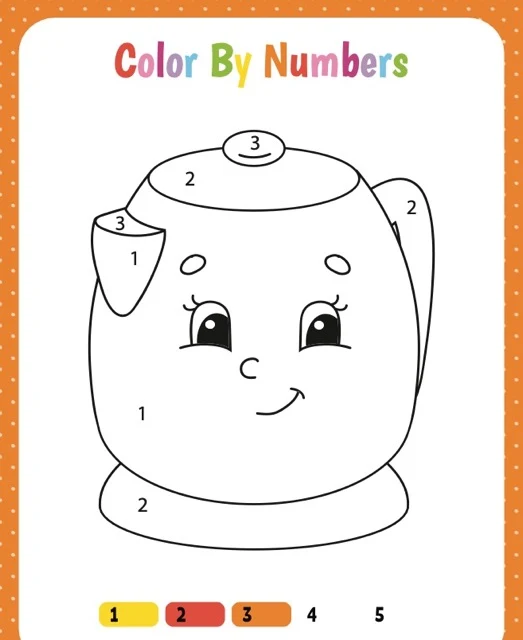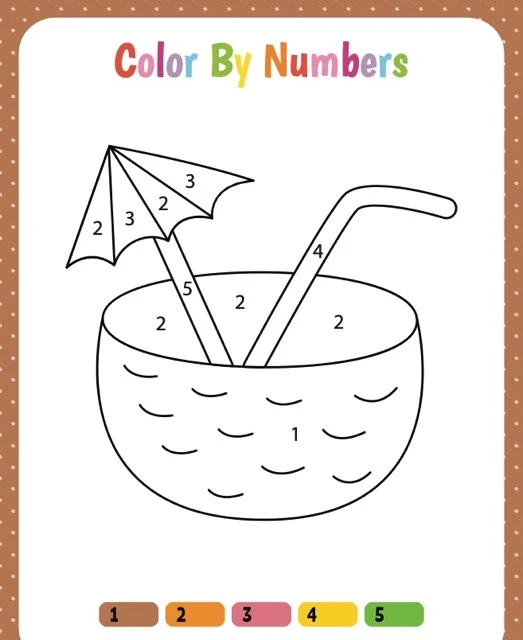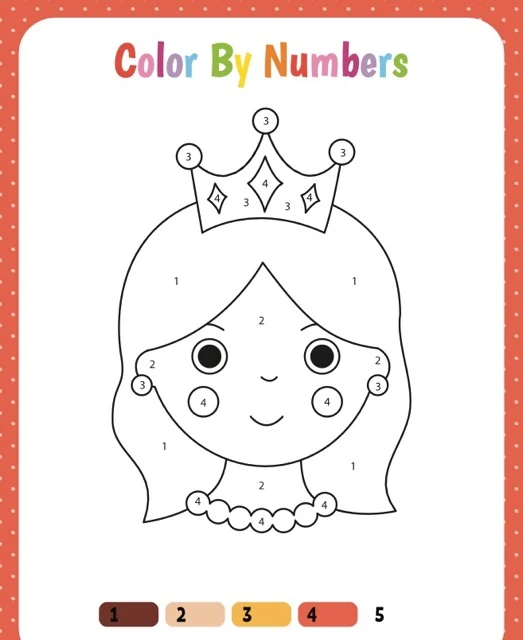Color by Numbers: Benefits and Applications
Three sources analyze color by numbers, highlighting its benefits in fine motor skill development, cognitive enhancement, and therapeutic applications. The activity's accessibility and adaptability across age groups are emphasized, noting its use of diverse themes and design complexities. The analysis concludes that color by numbers is a valuable tool for entertainment, education, and stress reduction, balancing structured learning with opportunities for creative expression. The analysis draws upon a guide, a PDF document, and a sample image set to support its findings.
Color By Numbers: A Comprehensive Briefing
This briefing document analyzes the activity of color by numbers, drawing insights from three sources: "Color by Numbers: A Comprehensive Guide," "Testing Theme: Color by Numbers.pdf," and a provided image set showcasing various color by numbers designs.
What is Color by Numbers?
Color by numbers is an activity where pre-drawn images are segmented into numbered sections. Each number corresponds to a specific color outlined in a provided color guide. Participants color each section according to its designated number, ultimately revealing the complete image.
Benefits of Color by Numbers:
Beyond its entertainment value, color by numbers offers a range of benefits, particularly for early childhood development.
●
Fine Motor Skill Development: As stated in "Color by Numbers: A Comprehensive Guide", the activity enhances "fine motor skills by requiring precise coloring within lines." This promotes hand-eye coordination and dexterity.
●
Cognitive Development: Color by numbers reinforces number recognition by linking numbers with colors. This association aids in early math learning. The activity also cultivates concentration and focus, as detailed in "Color by Numbers: A Comprehensive Guide": "Coloring requires attention to detail, fostering concentration skills."
●
Therapeutic Benefits: "Color by Numbers: A Comprehensive Guide" points out the potential therapeutic benefits, stating that it "provides relaxation and stress relief" as "Engaging in a calming activity like coloring can help reduce stress and anxiety."
Accessibility and Design:
Color by numbers stands out as a highly accessible leisure activity. The materials are readily available and affordable. Printables can be downloaded online, found in activity books, or sourced from educational websites. The "Testing Theme: Color by Numbers.pdf" and accompanying images demonstrate the diverse range of designs available, catering to a variety of interests, including:
●
Animals: Lions, turtles, and giraffes feature prominently, aligning with the statement in "Color by Numbers: A Comprehensive Guide" that animals are a common theme.
●
Vehicles: Cars, tractors, and construction vehicles are represented, further supporting the guide's assertion about vehicle-themed designs.
●
Holiday Themes: Halloween-themed images are present, aligning with the guide's mention of holiday themes.
Target Audience and Design Complexity:
Color by numbers caters to a wide range of ages. "Color by Numbers: A Comprehensive Guide" emphasizes that "Simpler designs with fewer colors are perfect for younger children, while more complex images with a larger color palette challenge older children and adults." This adaptability is evident in the provided images. The Halloween-themed designs, featuring simpler shapes and fewer colors, are likely aimed at a younger audience. In contrast, the tractor and windmill images, with their more intricate detailing and broader color palette, are suitable for older children or adults.
Encouraging Creativity:
While color by numbers offers structured guidance, it also allows for creative expression. "Color by Numbers: A Comprehensive Guide" reassures that "you can always get creative and use your own color choices." This flexibility encourages individual interpretation and personalization of the artwork.
Conclusion:
Color by numbers is a versatile and engaging activity with multiple benefits. Its accessibility, diverse designs, and adaptability for various age groups make it a valuable tool for entertainment, education, and therapeutic purposes. While the structured nature of the activity fosters learning, the option for creative color choices ensures an enjoyable and personal experience for participants of all ages.
Color by Numbers: A Comprehensive Guide
Color by Numbers FAQ
1. What is color by numbers?
Color by numbers is a fun activity where you color in sections of a picture based on the numbers assigned to them. Each number corresponds to a specific color, allowing you to create a beautiful image by following the color guide.
2. What are the benefits of color by numbers?
Color by numbers offers a variety of benefits:
●
Develops fine motor skills: Coloring within the lines helps improve hand-eye coordination and precision.
●
Enhances number recognition: Associating numbers with colors reinforces number learning.
●
Promotes concentration and focus: Coloring requires attention to detail, fostering concentration skills.
●
Provides relaxation and stress relief: Engaging in a calming activity like coloring can help reduce stress and anxiety.
●
Boosts creativity: While following the guide, children can also experiment with color choices and express their artistic side.
3. What age group is color by numbers suitable for?
Color by numbers is suitable for a wide range of ages, from preschoolers to adults. Simpler designs with fewer colors are perfect for younger children, while more complex images with a larger color palette challenge older children and adults.
4. What materials do I need for color by numbers?
You only need a few materials:
●
Color by numbers printable: These can be downloaded online or found in activity books.
●
Coloring tools: Crayons, colored pencils, markers, or paints can be used.
●
Optional: An eraser can be helpful for correcting mistakes.
5. How do I do color by numbers?
It's easy! Follow these simple steps:
1.
Choose a color by numbers image you like.
2.
Look at the color guide, which shows you which number corresponds to each color.
3.
Find a section of the picture with a number and color it in using the matching color.
4.
Repeat until the entire picture is colored!
6. Can I use my own colors in color by numbers?
Absolutely! While it's fun to follow the guide, you can always get creative and use your own color choices. It's a great way to personalize your artwork and experiment with different combinations.
7. Where can I find color by numbers printables?
There are many resources for finding color by numbers printables:
●
Online: Websites offer a vast selection of free and paid printable options. Simply search for "color by numbers printables" to find websites dedicated to these activities.
●
Activity books: Many bookstores and online retailers sell activity books specifically featuring color by numbers.
●
Educational websites: Some educational websites offer free printable resources, including color by numbers, for kids.
8. What are some tips for making color by numbers more enjoyable?
●
Choose a theme you love: Select images that interest you or your child, like animals, vehicles, or holiday-themed designs.
●
Start with simpler designs: If you are new to color by numbers, begin with images with fewer sections and colors.
●
Take breaks: If you feel overwhelmed, step away and return later.
●
Have fun! Coloring should be a relaxing and enjoyable activity.
Color by Numbers: A Comprehensive Guide
Color by Numbers: Study Guide
Short Answer Quiz
1.
What are the primary materials needed for color by numbers?
2.
Describe three benefits of color by numbers for individuals of any age.
3.
Explain how the complexity of color by numbers designs can vary to suit different age groups.
4.
Where can individuals find color by numbers printables, aside from online sources?
5.
What is the recommended first step in starting a color by numbers activity?
6.
Can individuals deviate from the provided color guide in color by numbers? Explain.
7.
List three themes commonly found in color by numbers images.
8.
What type of coloring tool is recommended for correcting mistakes in color by numbers?
9.
What is the main purpose of a color guide in color by numbers?
10.
Provide two tips for making color by numbers a more enjoyable experience.
Answer Key
1.
The primary materials needed are a color by numbers printable, coloring tools (such as crayons, colored pencils, markers, or paints), and optionally an eraser.
2.
Color by numbers enhances number recognition by associating numbers with colors. It develops fine motor skills by requiring precise coloring within lines, and it promotes concentration and focus due to the attention to detail required.
3.
Simpler designs with fewer colors are ideal for younger children, while older children and adults can engage with more complex images featuring a broader color palette.
4.
Individuals can find color by numbers printables in activity books sold at bookstores and online retailers, as well as on some educational websites.
5.
The first step is to choose a color by numbers image that appeals to the individual.
6.
Yes, individuals can use their own color choices instead of strictly adhering to the guide. This encourages creativity and personalization of the artwork.
7.
Common themes include animals, vehicles, and holiday-themed designs.
8.
An eraser is the recommended tool for correcting mistakes.
9.
The color guide indicates which number corresponds to each color, guiding the coloring process.
10.
Choosing a theme that interests the individual and starting with simpler designs can make the experience more enjoyable.
Essay Questions
1.
Analyze the role of color by numbers in developing early childhood education skills, focusing on cognitive and motor development.
2.
Discuss the potential therapeutic benefits of color by numbers for individuals experiencing stress or anxiety, considering its impact on focus and relaxation.
3.
Compare and contrast the artistic freedom and limitations presented by color by numbers, examining its potential to foster both structured learning and creative expression.
4.
Evaluate the accessibility of color by numbers as a leisure activity, considering factors like cost, availability of materials, and the range of designs available for diverse interests.
5.
Imagine you are designing a color by numbers activity for a specific age group. Describe your chosen theme, the complexity of the design, and the color palette, justifying your choices based on the developmental needs and interests of the target audience.
Glossary of Key Terms
























